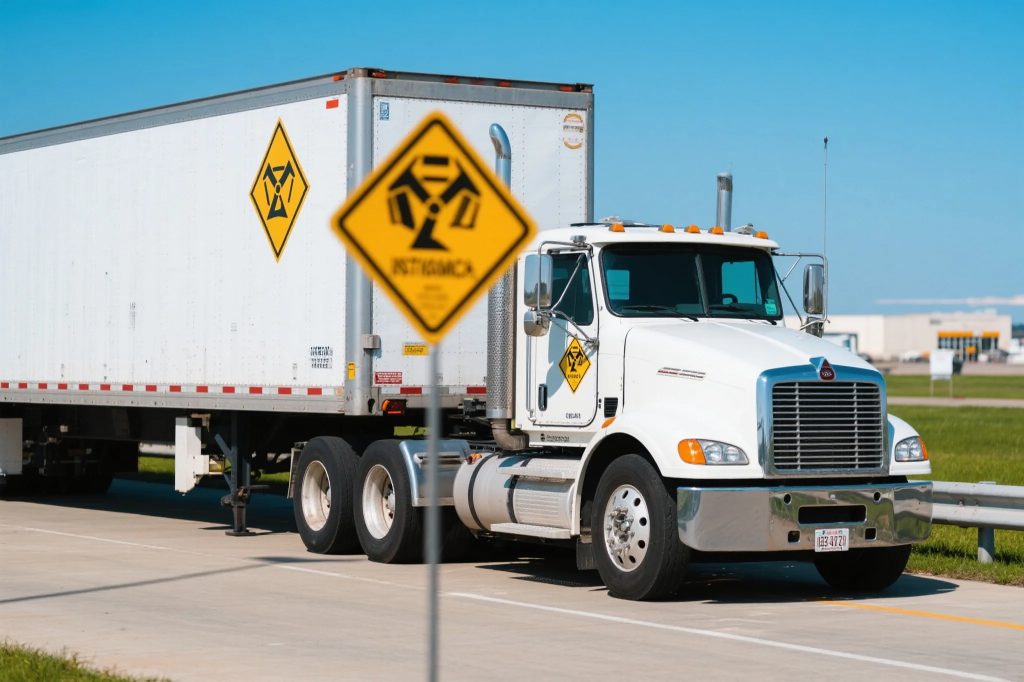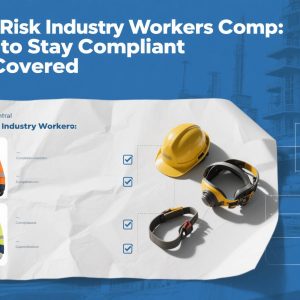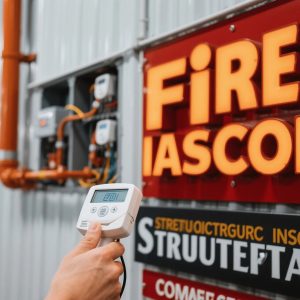Understanding the Unique Insurance Needs of HAZMAT Carriers
Transporting hazardous materials represents one of the highest-risk operations in the trucking industry, requiring specialized hazmat insurance coverage that goes far beyond standard commercial policies. The potential consequences of an accident involving flammable liquids, corrosive chemicals, or toxic substances create liability exposures that can quickly escalate into the tens of millions. What separates adequate protection from dangerous gaps often comes down to understanding the nuanced differences between various hazardous material classifications and how they impact insurance requirements. Carriers moving explosives face fundamentally different risks than those transporting radioactive medical waste, yet many operators mistakenly assume a one-size-fits-all approach to their coverage.
The foundation of any robust transportation liability insurance program for HAZMAT carriers must address three core exposure areas: third-party bodily injury and property damage, environmental cleanup costs, and regulatory fines/penalties. Standard trucking policies often exclude or severely limit these coverages when hazardous materials are involved. Many operators discover this too late – after an incident when their insurer denies coverage based on technical exclusions buried in the policy language. The most comprehensive programs are written on specialized forms that explicitly include pollution liability, emergency response costs, and even business interruption coverage for delays caused by HAZMAT incidents. These policies typically require higher limits than general trucking operations – $5 million minimum liability coverage is now considered baseline for most hazardous material transporters.
Essential Coverages for Hazardous Materials Transportation
Building a complete hazardous industry insurance portfolio requires layering several critical coverages that address the full spectrum of potential HAZMAT risks. Motor carrier liability forms the foundation, but must include specific endorsements for hazardous materials transportation. Most insurers require proof of compliance with all Department of Transportation hazardous materials regulations as a condition of coverage. Pollution legal liability coverage is equally crucial, as standard policies often exclude environmental damage claims that can dwarf traditional auto liability amounts. Many carriers now add contingent business interruption coverage to protect against revenue losses when incidents shut down operations during lengthy cleanups or investigations.
The specialized nature of cargo risk coverage for hazardous materials presents unique challenges that standard freight policies don’t address. Many hazardous materials require temperature control, specialized containment systems, or other handling precautions that create additional exposure points. Policies need to account not just for the value of the materials themselves, but for the extraordinary costs of spill containment, environmental remediation, and regulatory compliance following an incident. The most comprehensive cargo policies now include coverage for “denial of use” claims when shipments become contaminated and unusable without an actual spill occurring. They also address the increased security requirements for certain hazardous materials, covering losses from theft or terrorist acts that could have catastrophic public safety consequences.
Navigating the HAZMAT Insurance Underwriting Process
Securing adequate commercial trucking policies for hazardous materials transport requires thorough preparation for a rigorous underwriting process. Insurers will scrutinize everything from driver training records to emergency response plans before offering terms. Most require at least five years of loss runs, detailed descriptions of all materials transported, and documentation of safety management systems. Underwriters pay particular attention to a carrier’s hours-of-service compliance history, as fatigue is a leading contributor to HAZMAT incidents. They’ll also evaluate maintenance programs, preferring carriers that use predictive maintenance technologies and keep detailed service records on all equipment.
The underwriting process for hazmat insurance typically includes a facility inspection and review of loading/unloading procedures. Insurers want to verify proper placarding practices, spill containment equipment availability, and security measures for high-risk materials. Many now require GPS tracking and real-time temperature monitoring for certain shipments as a condition of coverage. The most favorable terms go to carriers that can demonstrate exceptional safety cultures through documented near-miss reporting systems, regular safety audits, and investment in advanced driver assistance technologies. Underwriters also evaluate a carrier’s relationships with shippers, preferring those that work with reputable chemical companies known for proper packaging and labeling practices.
Cost Management Strategies for HAZMAT Coverage
While transportation liability insurance for hazardous materials will always command premium pricing, savvy operators can implement several strategies to control costs without sacrificing protection. Many insurers offer substantial discounts for carriers that implement specific risk control measures like onboard stability control systems, electronic logging devices, and collision mitigation technology. Some provide premium credits for completing recognized safety programs such as the National Tank Truck Carriers’ Safety Council or the Institute of Hazardous Materials Management certification. Perhaps most importantly, maintaining a clean safety record over time remains the single most effective way to qualify for preferred rates in this specialized market.
Creative structuring of hazardous industry insurance programs can also yield significant savings. Many larger carriers opt for layered programs with high deductibles on predictable smaller claims while maintaining robust coverage for catastrophic exposures. Others participate in group captive programs that allow sharing of risk with similar-quality operators. Some explore parametric insurance products that provide predefined payouts for specific incident types, helping manage cash flow during crises. The most cost-effective programs often combine traditional insurance with strong self-insurance components for predictable, high-frequency/low-severity claims that don’t threaten financial stability.

Regulatory Compliance and Insurance Implications
The complex web of regulations governing hazardous materials transportation directly impacts commercial trucking policies and coverage availability. Carriers must maintain meticulous documentation of driver HAZMAT endorsements, training records, and vehicle inspection reports to qualify for coverage. Many insurers now require proof of participation in drug and alcohol testing programs that exceed standard DOT requirements. Environmental compliance is equally critical – carriers operating in multiple states need to demonstrate awareness of varying spill response regulations that could affect claim scenarios. The most thorough insurers conduct regular compliance audits as a value-added service, helping policyholders avoid coverage gaps created by regulatory missteps.
Recent changes in cargo risk coverage requirements for certain hazardous materials have created new insurance challenges. Lithium battery shipments now typically require special endorsements due to their unique fire risks. Carriers transporting cryogenic gases face new security and handling protocols that affect policy terms. The emergence of “green” hazardous materials like certain biofuels has created classification uncertainties that insurers are still addressing. Savvy carriers stay ahead of these changes by working with specialized brokers who track regulatory developments and can advise on necessary policy adjustments before they become compliance issues.
Emerging Risks in Hazardous Materials Transportation
The hazardous materials transport landscape is evolving in ways that demand constant hazmat insurance program reviews. Cybersecurity threats to shipment tracking systems could potentially compromise sensitive hazardous materials in transit, creating new liability exposures. Climate change is increasing weather-related risks during transport, particularly for temperature-sensitive materials. The growth of just-in-time manufacturing means more hazardous materials moving through congested urban areas during peak traffic times. Forward-looking insurers are developing new products to address these emerging risks, but carriers must proactively seek out these solutions rather than relying on outdated coverage forms.
Technological advancements are also reshaping transportation liability insurance for hazardous materials. Telematics systems now monitor not just vehicle location but tank pressure, temperature fluctuations, and potential leak detection in real time. Some insurers offer premium discounts for carriers using these advanced monitoring systems. Autonomous emergency braking and lane-keeping assistance systems are proving particularly valuable for HAZMAT carriers, reducing accident frequency enough to offset some premium increases. The most innovative operators are even experimenting with blockchain-based shipment tracking that provides immutable records of handling compliance – data that could prove invaluable during claims disputes and that some insurers are beginning to incorporate into underwriting models.
Claims Management Best Practices for HAZMAT Incidents
When hazardous materials incidents occur, proper claims handling can mean the difference between a manageable insurance event and a company-ending catastrophe. Specialized hazardous industry insurance providers typically maintain 24/7 emergency response teams that coordinate with carriers immediately after incidents. These experts handle everything from securing the scene to interfacing with regulatory agencies – services far beyond what standard trucking insurers provide. The best policies include pre-approved networks of environmental cleanup contractors who can mobilize immediately, as delays in spill response often dramatically increase total costs.
Documentation procedures for cargo risk coverage claims involving hazardous materials require particular attention. In addition to standard accident documentation, HAZMAT incidents typically require material safety data sheets, environmental impact assessments, and detailed records of emergency responder actions. Many insurers now provide mobile apps that guide drivers through proper incident documentation while ensuring compliance with regulatory reporting requirements. Perhaps most importantly, carriers should conduct post-incident reviews to identify process improvements – not just to prevent future accidents but to demonstrate to insurers their commitment to continuous safety improvement, which can help mitigate premium increases following claims.
Building Long-Term Relationships with Specialty Insurers
In the specialized world of hazardous materials transport, developing strong partnerships with commercial trucking policies providers pays dividends over time. Unlike standard trucking insurance where carriers often shop for the lowest price annually, HAZMAT coverage benefits from continuity with insurers who develop deep understanding of a carrier’s specific operations. These long-term relationships become particularly valuable when incidents occur, as familiar insurers are more likely to work collaboratively on claims rather than taking adversarial positions. Many specialty insurers offer loss control services that help policyholders identify and address risks before they lead to claims – a value-added service that general market insurers rarely provide.
The most successful hazardous materials carriers treat their hazmat insurance providers as strategic partners rather than just vendors. They involve insurers early in decisions about new equipment purchases, route changes, or material additions to ensure coverage remains adequate. They participate actively in safety groups and conferences sponsored by their insurers. Perhaps most importantly, they maintain transparent communication about both successes and challenges in their safety programs. This collaborative approach often leads to more favorable terms at renewal time and can make the critical difference in maintaining affordable coverage during industry hard markets when many carriers find themselves struggling to secure any coverage at all.





